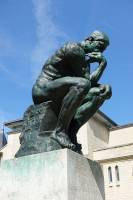Dr Tim Beasley-Murray explains more about the emphasis of the BA Creative Arts and Humanities programme on collaboration.
'I cannot do without the other; I cannot become myself without the other; I must find myself in the other, finding the other in me.' Mikhail Bakhtin

- joint thinking;
- passionate conversations;
- emotional connections;
- shared struggles;
- the diverse skills and points of view of human beings.
On this programme, you are going to learn how to work and create together: on the Collaborative Economy you will work with your fellow students, using your creative skills to respond to the needs of an external organisation; on The UCL East Challenge, you will work across disciplines with students on other UCL East Programmes (BA Robotics and AI, BA Heritage and so on) towards solutions for some of the world’s most pressing problems.
Tunisian Collaborative Painting
An example of the way collaboration works in art, is Tunisian collaborative painting. Hechmi Ghachem created Tunisian Collaborative Painting in 1988 when Zine el-Abidine Ben Ali became president and dictator of Tunisia. Individual expression became dangerous under this dictatorship, so Hechmi set out to reclaim freedom of expression for Tunisian artists by forming groups called Brigades d'Intervention Plastique.
The brigades enabled artists to leave their professional loneliness and work in the same space, and on the same canvas. They created ties built on pleasure, excitement, struggle, jealousy, life, and love and death, as in every creative act. Together they produced paintings which mixed the best parts of themselves with the best parts of each of the other artists. One painting represented the individuality of all. Hechmi Ghachem
Why don’t you get together with some friends or family and make your own? This is the UK / USA method:
“There must be at least three artists with a maximum of seven. There is no pre-conceived subject. One artist starts the painting. Anyone can paint at any time and anyone can paint over anyone else's work. One artist is appointed an arbiter to settle disputes. If any artist thinks the painting is finished he raises his hand and the arbiter takes a vote. Only a majority of the artists can declare a painting finished. A painting can take a maximum of three hours. The painting is created in silence.
 Close
Close

